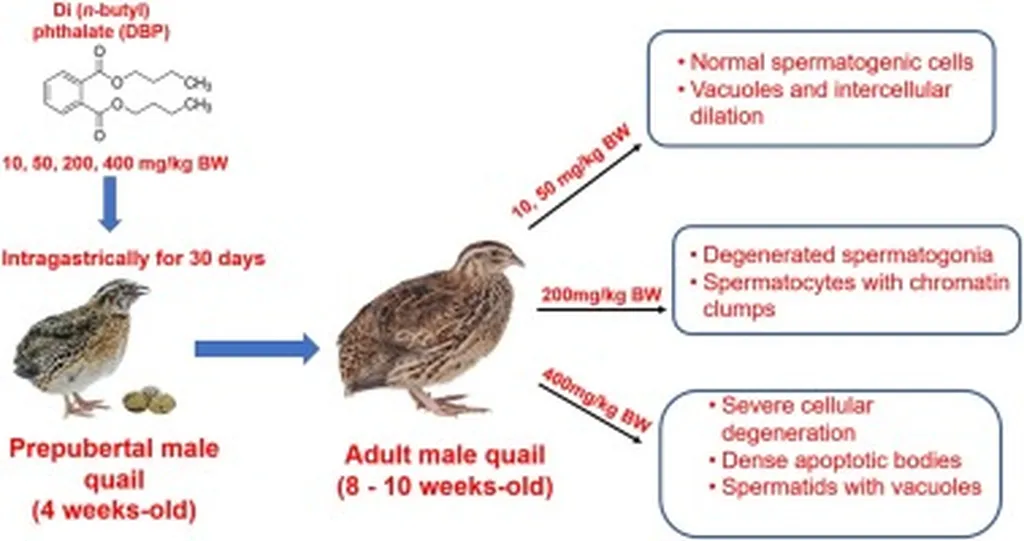In the world of poultry science, a recent study published in *Avian Research* (or *Madárkutatás* in English) is shedding light on how dietary constraints influence the reproductive strategies of Japanese Quail, offering insights that could resonate far beyond the coop. Led by Gebrehaweria K. Reda from the University of Debrecen in Hungary, the research delves into the intricate trade-offs birds make when resources are scarce, providing a glimpse into the evolutionary resilience of these feathered creatures.
The study, conducted in two trials, explored how different levels of dietary restriction and unpredictable feeding schedules affect the proportional composition of egg components in Japanese Quail. The findings reveal a fascinating story of prioritization and adaptation. Under severe dietary restrictions, the quails reduced the mass of the albumen (egg white) and shell, but maintained the yolk mass. This suggests that, when push comes to shove, these birds prioritize yolk deposition to sustain reproductive functions.
“Birds may evolutionarily prioritize yolk deposition to sustain reproductive functions,” Reda explained, highlighting the strategic allocation of resources under dietary constraints. This prioritization, however, comes with trade-offs. Reduced albumen content can limit essential nutrients and disrupt the embryo’s osmoregulation, ultimately affecting offspring quality. Meanwhile, compromised shell integrity can impact the egg’s ability to provide physical protection, regulate gas exchange, and control water loss, all of which are crucial for embryonic development.
The study also found that moderate dietary restrictions and unpredictable feeding schedules had no significant effect on the egg traits, indicating a remarkable adaptive capacity in these birds. This resilience under fluctuating conditions underscores the quails’ ability to cope with environmental variability, a trait that could be harnessed in commercial poultry farming to enhance productivity and sustainability.
The implications of this research extend beyond the realm of avian biology. In the commercial poultry sector, understanding how dietary constraints influence egg composition can inform feeding strategies that optimize resource allocation and improve offspring quality. This could lead to more efficient and sustainable poultry farming practices, benefiting both producers and consumers.
Moreover, the study’s findings could inspire innovations in other sectors, such as the energy industry, where resource allocation and resilience are paramount. For instance, the strategic prioritization observed in quails could serve as a model for developing systems that adapt to fluctuating resources, enhancing overall efficiency and sustainability.
As we grapple with the challenges of a changing climate and resource scarcity, the lessons from these humble birds offer a compelling narrative of adaptation and resilience. The research by Reda and his team not only advances our understanding of avian reproductive strategies but also provides a blueprint for navigating the complexities of resource allocation in an ever-changing world.

